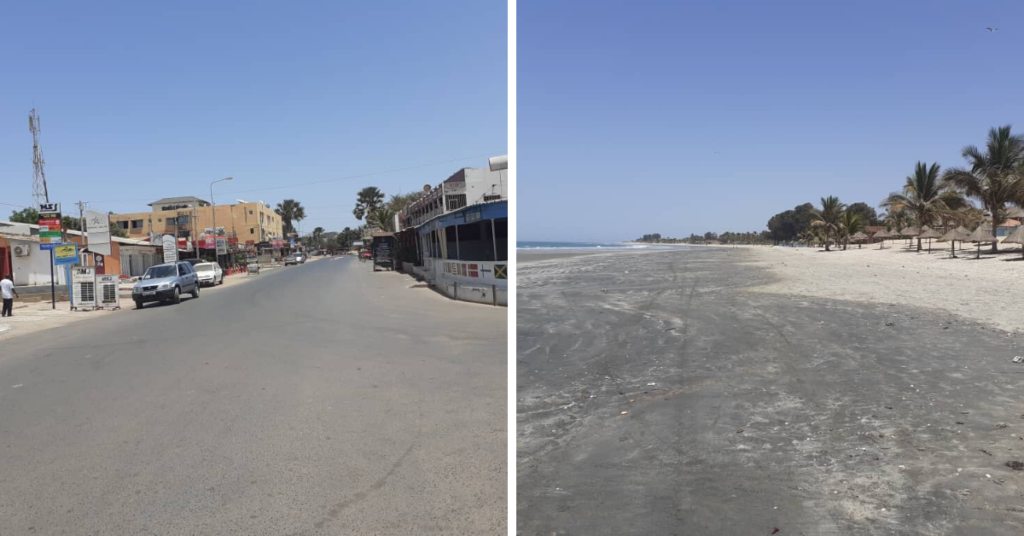These are extraordinary times, a return to business as usual looks improbable. The IMF is predicting that the ‘Great Lockdown’ will result in the worst recession since the Great Depression, and far worse than the Global Financial Crisis. They say that there is considerable uncertainty about what the economic landscape will look like when we emerge from this lockdown. Professor Neil Ferguson, of Imperial College London, has said that “If we relax measures too much we’ll see a resurgence of transmission.” While it is fair to say that there is debate amongst epidemiologists Ferguson has been influential in advising the UK government.
COVID-19 is a global pandemic, but its impacts and the responses to it have varied significantly around the world. Just as countries imposed lockdown at different times, they are reducing restrictions on different timetables and in different ways. Of course, this reflects the diversity of our world, itself a significant driver of demand for tourism.
The diversity of impacts and responses will make a recovery for travel and tourism significantly more difficult for travel and tourism than for many other sectors. In my last blog, I wrote about how national governments and local authorities are acting to discourage and prevent domestic tourism and people visiting second homes. Destinations have closed to visitors and tourists, the lockdowns have significantly reduced even local travel. Google has been producing Community Mobility Reports featuring countries from Afghanistan to Zimbabwe – you might like to look yours up.
For tourism to be possible, the lockdown has to have been lifted at the same time in the source market and the destination. And the traveller needs to be confident that their destination is safe and that there is no risk of being trapped in the destination by a lockdown in the destination or at home. There are likely to be further lockdowns and compulsory quarantine for travellers whenever coronavirus spikes. The travellers will also need to be confident that the risk of catching the virus travelling to the airport, on the plane, coach, train or cruise liner is low. Fear will remain a major deterrent, and travel insurance may continue to be unavailable or expensive for cover for risks associated with the pandemic.
For anyone who knows The Gambia the photographs of the deserted Senegambia strip and the beach are distressing. There, and in so many destinations in the developing world, many families are dependent on employment in tourism or on selling goods or services to tourists from wealthier countries. They live hand to mouth, and the tourists are no longer arriving. For them, there are no government bailouts. On 19th March The Gambia banned flights from thirteen countries after recording its first case of coronavirus it prioritised the health of its people. Gambians and non-Gambians travelling from 47 countries in Asia, Europe and the Americas to The Gambia will undergo mandatory quarantine for 14 days. There are many countries in the developing world where livelihoods will be severely impacted by the loss of incomes from tourism and government revenues will be significantly reduced. The damage will be far greater than in their originating markets.
As China has moved to ease restrictions in Wuhan, a new coronavirus flare-up has arrived along its remote northern border with Russia in Heilongjiang province. The frontier has been sealed, and emergency medical units rushed to the area to prevent travellers from bringing the virus back from overseas. Across Europe, different nation-states are relaxing the lockdown and social distancing rules in a variety of ways.
Aviation has been hit hard. IATA reports that worldwide flights are down almost 80% IATA expects domestic flights to bounce back before international recovery, with revenue per passenger-km down 33% year on year by Q4, implying a 55% fall in passenger revenues. IATA is assuming that restrictions on international passenger arrivals will be reduced cautiously. EasyJet chief executive Johan Lundgren is forecasting that “restrictions on domestic flying would be lifted first, but with social distancing measures in place at airports and on flights for an unspecified time…. We don’t know when flying will resume again. Nobody can tell what the level of demand will be when this comes back.” It is expected that social distancing will be required onboard aircraft, and this will reduce passenger numbers on fights and necessarily increase ticket prices.
I have no crystal ball, and I have no more ability to forecast the future than anyone else, but the evidence suggests that an early return to business, as usual, is highly unlikely.
The sources used for this piece and much more information about the impact of COVID-19 on travel and tourism can be found here
You may also be interested in…
- Will 2020 define the future of tourism?
- The Pandemic and Tourism in Africa
- Climate Change – Flying is not the problem
